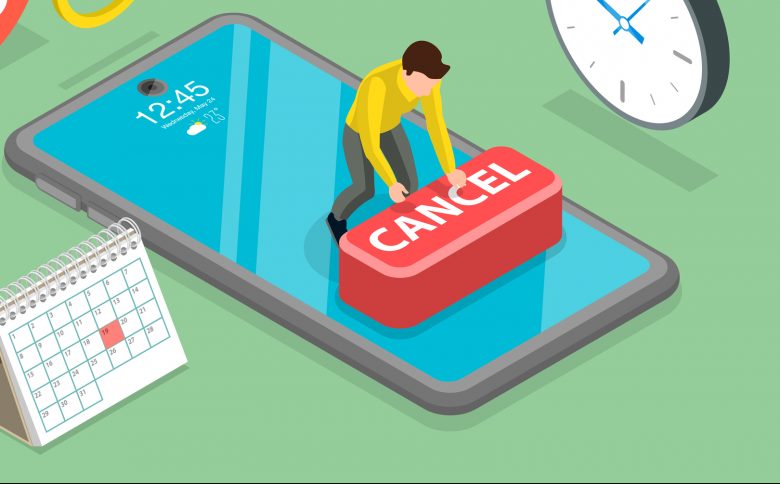Whether it’s Dollar Shave Club for razors, Ipsy for makeup, Amazon Prime for movies, or Hello Fresh for home-cooked food, subscriptions are all the rage these days. But, not every new subscription service becomes a success.
Of course, product failure in general is always a concern whether you’re starting a business for the first time, or whether you’re a serial entrepreneur.
But beyond this, some specific areas need special attention when it comes to the subscription model in business. If left without proper attention, this model can be at a unique risk of failure if specific parts of the business aren’t handled appropriately.
The best subscription services have a carved-out niche. They retain customers because they know exactly who they’re selling to. They don’t try to sell to everyone, and they have carefully calculated profit margins. And, they’re offering something really special that resonates with their specific audience.
The Rise of the Subscription Model
A recent survey found that people spend about $219 monthly on subscription services. UBS predicts that the global “subscription economy” will more than double to $1.5 trillion by 2025. According to a report by McKinsey & Company, that number will be over $2 trillion. Why has the subscription model become a dominant one in the lives of so many people?
Subscription-based businesses have been on the rise for over a decade. The model has seen success in online-only services like streaming services. However, businesses like those that offer subscription boxes have also enjoyed the benefits of this model.
One of the reasons why this model works so well is because it offers many benefits for the business as well as the customers. Businesses that offer a subscription can rely on the revenue that is generated monthly, semi-annually, and annually. Customers, on the other hand, like the option of paying a small monthly fee in order to have access to the services provided.
However, despite its general success, this business model does not guarantee success for the business providing the subscription. Many factors can lead to a subscription-based business failing if not handled cautiously. Let’s take a look at some of those things.
Not Offering the Right Product
Chances are, you or someone you know is currently paying for a subscription service. Whether it’s for movies, novels, beauty products, or food and wine, you’ve probably developed an affinity for this product. Maybe it’s because you can only stream this favorite show on a certain service. Or maybe you’re a foodie, and you love trying a special wine or a hard-to-find food that you can’t get somewhere else. Everyone can get hooked on something.
So, as an entrepreneur, think of how you can make your subscription model addictive. How can you keep people coming back?
Food subscription boxes, wine subscription services, and beauty self-care subscriptions take advantage of this need for people to treat themselves. But, there can often be a lot of coordination with various vendors. This is one of the drawbacks of starting a subscription service. There is a great need to arrange how you’ll acquire products and how they will be shipped. There are lots of details involved with this model.
Bad Retention Strategy
Subscription services rest on the premise of offering a great product to repeat customers. If your brand’s value proposition rests on offering a cheap product and selling it to a large volume of customers, you may need to reconsider if your subscription model will be needed at all.
Retaining customers is key in this model. If, for example, you’re a restaurant, how will you keep customers interested in your menu? Will the menu change? Or will customers be tired of the same options day after day? Consider how you might keep customers excited about a food and restaurant subscription if this is what you’re considering.
You can propel your subscription model to success by appropriately promoting what it will have to offer. Or, you can promote the great products it’s offered in the past to enhance trust in the brand.
Not a Good Value for the Price
Subscription services have to strike that special balance between being too cheap and being too expensive. Many subscription services are slightly out of reach, financially, for some customers. But, for many people, subscription services make their lives a little easier, and a little more enjoyable. Think of a guilty pleasure or something that brings a smile to their day.
Price can be a delicate issue to consider for a subscription model. For some customers, it can be a great value to pay for a subscription model and get the same service over and over and over again. However, you’ll want to ensure that your business is still profitable. If you discover that the subscription model isn’t succeeding – or worse, that it’s causing your business to lose money – you’ll need to fulfill any agreements with your customers and plan an exit strategy.
On the flip side, if the price creeps too high and it becomes inaccessible for your target market, you’ll need to go back to the drawing board. Subscription models often entice customers to buy through a perceived “good value.” This can be true of services or products that can be found cheaper elsewhere. So, you’ll need to carefully balance the line between profit and value.
Not Connected to Their Customers
Marketing can make all the difference in helping your subscription succeed rather than fail. Establishing a connection with your customers – and maintaining it – can help you understand how your products are being perceived. This can help you identify trouble spots and to course-correct appropriately.
And, it should be noted that within each type of subscription model, there are differences in the target market. Take for example beauty subscription services. There are differences in price point as well as demographic differences for who might be interested in each of these:
- Allure Beauty
- Beauty Fix
- Beauty Heroes
- Boxy Charm
- FabFitFun
- Ipsy
- Kinder Beauty Box
- Walmart Beauty Box
Staying connected to your customers and how they perceive your products is extremely important.
This is especially true if you’re starting a subscription box service. Trust in your brand won’t happen overnight. But, you can develop trust in your company by posting photos on your social media pages to show what this month’s offerings will include. Or, you might host occasional giveaways for prospective customers to enter. This can increase credibility for your brand, and potentially convert some casual observers into shoppers who make real purchases.
Conclusion
Subscription boxes can be thought of as joy in a box, but they aren’t an easy venture to establish. It takes a lot of thought to create a winning idea. But, with a thoughtful purpose, and with caution, a subscription model can be a success.
Also read:
9 Key Elements of a Subscription-Based Business Model
10 Most Common Types of Business Models and How They Work
5 Internet-based Business Models and How they Work














Pingback: Why Some Subscription Fashions Fail – Webbizmarket.com
Pingback: Why Some Subscription Models Fail – Austin Rotter
Pingback: Why Some Subscription Models Fail – Andrea Zanon
Pingback: Why Some Subscription Models Fail – Joseph Odierno Buffalo